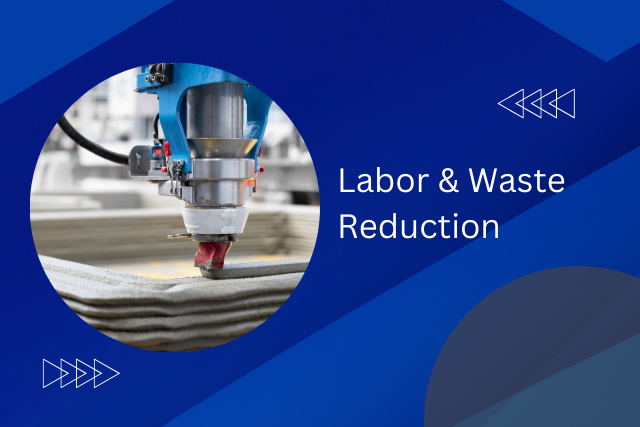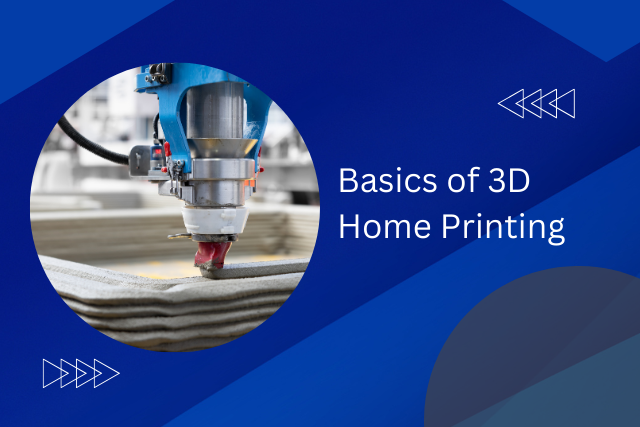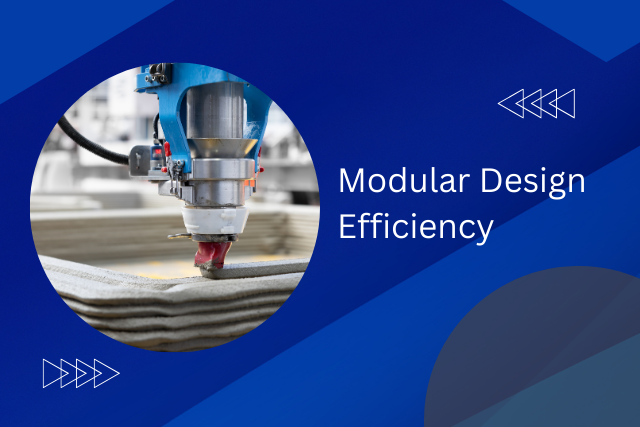The rise of 3D home printing is a big change in how we build houses, thanks to special robots that are changing old ways of building. These robots use advanced printing methods to make building homes faster and also help make houses in a way that’s better for the planet and can be more tailored to what people want. As we look into how these robots work and their effects on building homes, it’s interesting to think about how much they will change the way we make places for people to live in the future.
The Dawn of Construction Robotics
The start of using robots in building marks a big change in how we build things. These robots bring new levels of speed and accuracy by using advanced technology. This big change isn’t just good news for the building world; it also gives people with big ideas in the industry a chance to do things differently. With robots, building projects can move away from old ways of doing things. This means people can be more creative, finish jobs faster, and do less hard work by hand.
These robots can do many kinds of jobs, like moving materials, putting parts of buildings together, and doing detailed work. Using robots in building projects means we can make buildings with great care and fit them exactly to what each project needs.
People who run building businesses now have new ways to change their work, giving their customers things they couldn’t before. Using robots in building not only moves us towards building in a better and more efficient way but also lets leaders in this field push the limits of designing and making buildings.
Pioneering 3D Printing Robots
Innovative 3D printing robots are changing how houses are built, making it faster and more accurate. These robots work like big, computer-guided glue guns, putting down layers of concrete or other materials based on plans made by architects and engineers. This is a big change from the old way of building houses, making it quicker and cheaper.
People who create these robots are thinking about more than just making building faster. They see a future where houses can be made more quickly, at a lower cost, and in more creative ways, without losing quality. 3D printing technology lets people change designs to fit what they want or need, giving them a new kind of freedom in building houses.
These robots are starting a technical revolution, making it possible to build structures that were once too hard or expensive to make. Using these robots in building points to a move towards building in a way that’s better for the environment because they use materials more wisely and make less waste. The work in making these 3D printing robots is leading us into a new time in building. It also makes us look forward to a future where new technology keeps making it easier and better to create the places we live in.
How 3D Home Printing Works
3D home printing is a way to make houses using a special kind of robot. These robots take a digital design of a house and build it layer by layer from the bottom up. This method is different from the usual way of making houses because it adds material instead of cutting it away. It’s like making a house using a big 3D printer.
The robots use a special concrete or composite material that is strong and can bend a little. This material goes through a nozzle and is placed exactly where it needs to go, following the house design perfectly. This way, the house can have any shape or feature that the design calls for, even really complicated ones.
Using 3D printing for building houses is a new way of doing things that allows for more customization, does the job faster, and is better for the environment. It breaks free from the old ways of building houses and uses the power of computers and robots to make almost any house design a reality.
The Benefits of Robotic Builders
The integration of robotic builders in 3D home printing technology marks a transformative leap forward, offering tangible benefits across cost efficiency, construction speed, and the precision and quality of builds. By leveraging automated systems, these robotic constructors not only streamline the building process but also introduce a level of accuracy and speed unattainable through traditional construction methods. This paradigm shift not only optimizes resource utilization but also opens avenues for innovation in the rapidly evolving construction sector.
Cost Efficiency Advantages
Using robots to print 3D homes makes building houses much cheaper, making it easier for more people to afford homes. This new way of building homes changes the game, making it possible for more people to start businesses in building homes.
| Factor | Traditional Construction | Robotic 3D Printing |
|---|---|---|
| Labor Cost | High | Much Lower |
| Material Waste | A lot | Very Little |
| Precision | Can vary | High |
| Customization Cost | Costs a lot | Cheap |
| Environmental Impact | Bigger | Smaller |
In simple words, robots that print homes are a big deal because they save a lot of money on building houses. They use less stuff, waste less, and are better for the planet. Plus, making a home that fits what you want exactly is cheaper with these robots.
Enhanced Construction Speed
Using robotic 3D printing in building houses helps in saving both money and time. Robots can work all day and night, making it much faster to turn a house plan into a real home. This speed in building is very important. It allows us to quickly meet the need for more houses and to quickly set up homes in emergency situations. The fast work of robots in construction brings new ideas and opportunities. It lets people who build and design homes do so with new freedom and creativity, making it possible to start and finish projects much faster.
Precision and Quality Boost
Robotic builders are changing how houses are built, making them more precise and of higher quality. These robots make sure every part of a house is made exactly right, which means less waste and stronger buildings. They use smart algorithms and make changes on the go to get details perfect. This new technology makes homes look and work better, and also lets people choose their own designs without losing quality. Business people in building are using these robots to create custom homes that are not only places to live but carefully made spaces for the future.
Key Players in Robotic Construction
As we explore the frontier of robotic construction, it’s crucial to identify the pioneering firms and innovators propelling this industry forward. The automation of construction processes through robotics not only streamlines project timelines but also introduces significant economic advantages, potentially transforming market dynamics. This discussion will focus on the key players leading this technological revolution, their contributions to automating construction, and the broader economic implications of their innovations.
Leading Robotic Innovators
In the fast-growing area of building robots, some leading companies are making big changes to the old ways of building things. They use advanced 3D printing to not only change how buildings are made but also to push the limits of design, work speed, and being green. Their efforts are moving us towards a future where building is quicker, uses fewer resources, and allows for more creativity.
| Company Name | Innovation Focus |
|---|---|
| Apis Cor | Mobile 3D printing |
| ICON | Large-scale 3D printing |
| COBOD International | Construction automation |
| CyBe Construction | Rapid on-site printing |
| MX3D | Metal 3D printing |
These companies show the bold spirit behind the robot building revolution. They offer a peek into a future where we can design and build with almost no limits.
Construction Process Automation
Exploring more into automated construction, key players are changing how buildings are made. They use advanced robotics to do jobs that used to need a lot of manual work, making construction faster and more accurate.
This opens up new possibilities for creating complex, unique designs that were once too difficult or expensive. These leading companies are not just making machines; they are creating future solutions. They help make construction very flexible, efficient, and good for the environment. Their work is very important in making the construction industry meet the needs of people who want more choices and new ideas.
Economic Impacts Explored
The introduction of robots in building work is changing the economy of the construction industry. This change is led by innovative companies that are finding new ways to save money and make building faster. These companies are changing how buildings are made and are making it cheaper to build things. They use automation and smart programs to cut down on the need for human labor and to speed up the building process.
This change is not only saving money but also encouraging new designs and better care for the environment. As more robots are used in construction, the industry is moving towards a big change. This change will focus on doing things faster, in a more eco-friendly way, and allowing for more creativity in building.
The Materials Behind the Magic
Exploring the special materials used in 3D home printing shows us the basis of this new way of building houses. At the heart of this method are advanced composites made to be strong, good for the earth, and adaptable.
These materials, like geopolymers and recycled polymers, let us build homes that are eco-friendly and can stand up to different weather conditions. People who like to invent and try new things can use these materials to go beyond old ways of building, making designs that were once thought to be impossible.
People who are good at innovation, technology, and business worked together to make these materials perfect for use with robots. This teamwork between the science of materials and robots has opened up new ways to build homes, breaking free from old limits. For example, self-healing concrete is a special kind of material that can fix small cracks by itself, making buildings last longer.
The materials used in 3D home printing are not just for building; they show how creative humans can be, how we can take care of our planet, and how we can move past old ways of building.
Challenges in Robotic Home Printing
The new materials used in 3D home printing are exciting, but making things with robots can be hard.
In the world of building with robots, people who make new things face special problems. Mixing new technology with old ways of building needs careful work. We need to be very accurate and ready to change when needed. These problems are not only about technology but also about starting a new chapter in building homes. They call for brave people to push the limits of home construction.
| Challenge | Description | Impact |
|---|---|---|
| Precision | Making sure robots print very accurately to prevent weak structures. | Directly impacts the safety and lasting quality of printed homes. |
| Material Handling | Dealing with how advanced printing materials move and react in different situations. | Affects how good and consistent buildings are. |
| Environmental Factors | Dealing with changes in weather and ground, which can mess up the printing. | Makes it hard for robotic printers to work well everywhere. |
| Scalability | Moving from testing to big projects without losing quality. | Important for making 3D printed homes common and affordable. |
It’s important for leaders in home building to face these problems head-on. This opens up new possibilities in how we design and build houses.
Future Prospects of Construction Bots
In the world of building new things, robots that can do 3D printing are changing how homes are made. These construction bots are leading us to a future where we can make buildings that are more complicated and fancy, but still built well and quickly. These bots can work with many different designs, which means we’re not stuck with the old ways of making buildings. We can try out new and exciting designs.
Soon, we might see these construction bots get even smarter by using artificial intelligence. This means they can make decisions on their own while they’re building, which can make the whole process faster and less likely to have mistakes. Plus, this new technology is not just for big companies. Smaller businesses and even single builders can use it, too. This could make the building industry more competitive and full of new ideas.
Also, we’re getting better at making materials that work well with 3D printing. This could make buildings that last longer and are better for the environment. As construction bots get better at what they do, making homes will not only be faster and more to our liking but also open to more people. We’re looking at a future where we can really change the way buildings are made, with more freedom in how we design and build them.
Environmental Impact of 3D Printing Homes
As we explore the environmental impact of 3D printing homes, it is crucial to consider the innovative strides made towards reducing construction waste and achieving a lower carbon footprint.
These advancements signal a paradigm shift in sustainable construction practices, though they also bring to light the challenges surrounding material sustainability. Addressing these issues head-on will be essential in harnessing the full potential of 3D printing technology in building eco-friendly homes for the future.
Reduced Construction Waste
Using 3D printing technology for building homes greatly cuts down on waste. This new way of building is good for our planet because it uses materials very carefully. There is hardly any extra stuff left over, unlike the usual way of building houses which creates a lot of waste. By turning computer designs into real houses, 3D printing makes building more about saving resources and less about waste.
This is perfect for people who want to use new technology but also care about the environment. Choosing a 3D printed home means choosing a way of living that is kind to our planet. This change in how we build houses is not only about using cool new tech but also about giving people the chance to live in a way that matches their care for the environment.
Lower Carbon Footprint
3D printing homes help the environment by creating less trash from building. This new way uses cool robots and smart materials to use less stuff and make less pollution. Here’s how it compares to old ways of building houses:
| Old Building Ways | 3D Printing Homes |
|---|---|
| Uses a lot of energy | Uses less energy |
| Makes a lot of trash | Makes very little trash |
| Puts out a lot of CO2 | Puts out less CO2 |
| Needs many workers | Uses robots |
People who are pushing this technology forward are not just changing how we build homes but are also helping the planet. 3D printing homes are making it possible to have houses that don’t harm the environment as much, use resources wisely, and don’t need as many people to build. This way of building houses is good for the Earth and makes building homes quicker and easier.
Material Sustainability Challenges
Even though 3D printing houses is good for the environment, we still face problems with making sure the materials we use are green. This new way of building homes is quick, creates less waste, and doesn’t use as much carbon.
But, we need to work hard to find materials that are safe for the environment, can be used again, and come from places that don’t harm the planet. Our job is to create a way of building that doesn’t follow old rules, making sure our homes are good for the Earth. We need everyone to work together to find new materials that help us build homes that are better for our planet.
Real-World Examples and Success Stories
Around the world, creative companies are changing how we build houses by using robots to 3D print entire homes. This new way of building is faster, creates less waste, and is better for the environment. Leading this change are companies like ICON and Apis Cor, which show how using robots to print homes can save money and be very effective.
ICON, a company from the U.S., has made news by building the first 3D-printed home that was allowed by the law in Austin, Texas. This shows that we can build affordable homes quickly to help solve problems like homelessness. On the other hand, Apis Cor has shown that it’s possible to 3D print a house in just 24 hours. This is important for helping people quickly after disasters or when new buildings are needed fast.
These stories are more than just showing what technology can do; they point to a big change in how we think about building homes. We are moving towards a future where we can build homes faster, cheaper, and in a way that’s better for our planet. As technology gets better, the dream of building better homes in a greener way is becoming a reality.
Conclusion
In short, using robots for building homes with 3D printing is changing the way we construct buildings, making the process faster, more accurate, and better for the environment. These new technologies are making a big difference in how quickly and cheaply we can build houses, and they’re also good news for the planet.
As we solve more problems and improve the technology, robots are becoming more important in creating new buildings. The good results we’re seeing so far show that using robots in construction is likely to become more common.






